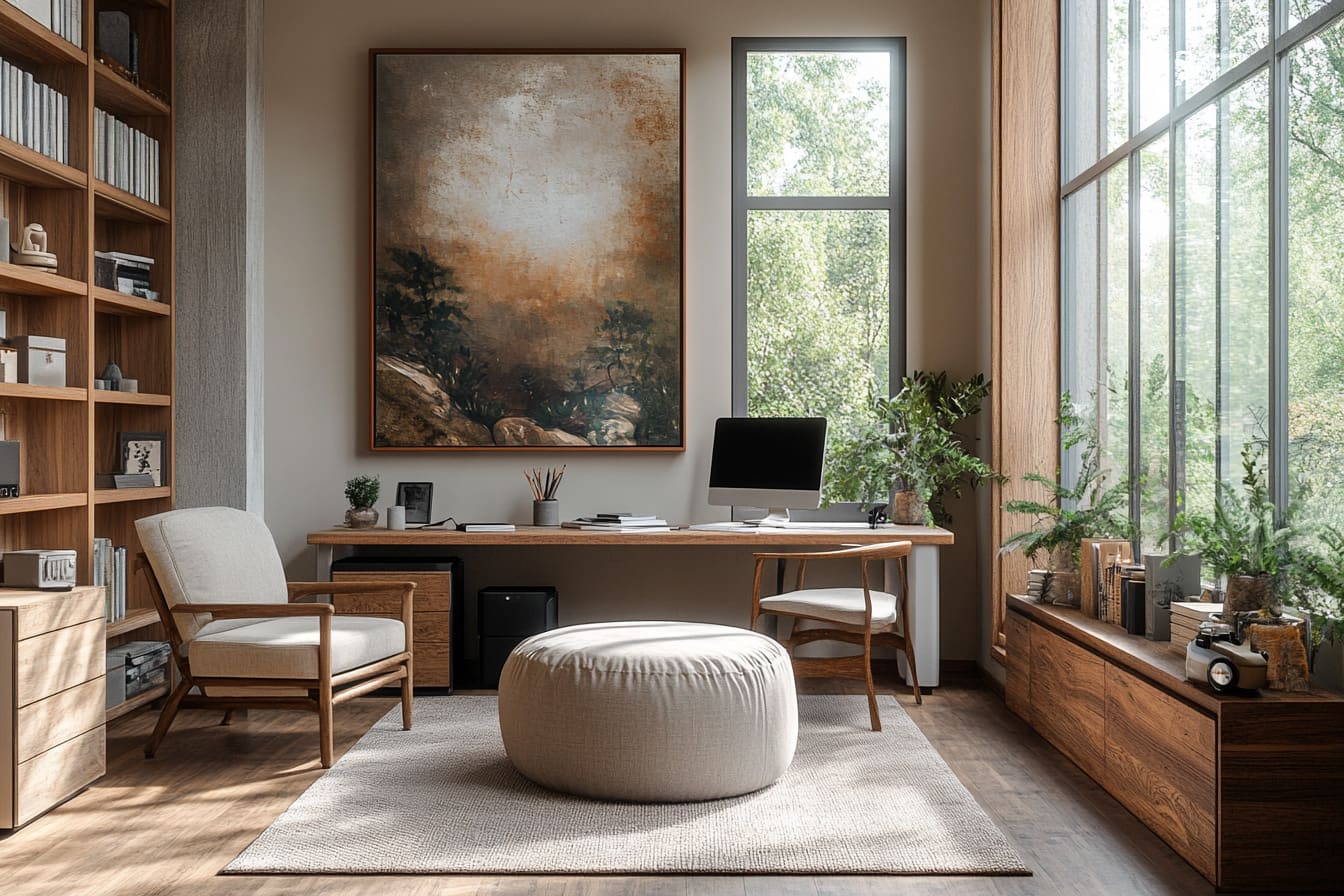A thoughtfully designed workspace isn’t merely a backdrop for your writing—it’s a dynamic environment that can elevate your creativity, sharpen your focus, and boost your productivity. Research shows that the right environment can increase output by up to 20% while fostering innovative thinking. Whether you’re a novelist, a blogger, or an academic writer, designing your personal productivity haven is essential for both disciplined work and imaginative exploration.
The Impact of Workspace Design on Creativity and Productivity
A well-organized workspace can profoundly affect both your mood and your work. Studies suggest that tailored environments promote clarity and focus by reducing cognitive overload. An organized setting minimizes distractions, allowing your mind to settle into deeper concentration and creative flow. For instance, Indeed’s guide on creating a productive workspace highlights how thoughtful design can streamline your routine, while insights from Simple Home Simple Life reveal the power of an uncluttered space in boosting innovative thinking.
Elements of an Effective Creative Workspace
Designing a creative workspace involves blending aesthetics with functionality. Here are the key elements:
1. Lighting
Natural Light: Maximizing natural light is crucial as it not only regulates your circadian rhythms but also enhances your mood and alertness. Position your desk near a window or use light-filtering blinds to enjoy ample daylight without glare. Learn more about the benefits of natural light through Mill City Press’s writer setup tips.
Artificial Lighting: Complement daylight with warm LED desk lamps during evenings or in spaces where natural light is scarce. A well-placed lamp can create a comfortable ambiance that mirrors the soothing effect of natural light.
2. Ergonomics
Investing in ergonomic furniture is essential for long writing sessions. An adjustable ergonomic chair and desk setup not only promote good posture but also reduce physical strain. Accessories like wrist rests and monitor stands further contribute to a healthier, more comfortable work environment, ensuring that your body remains as engaged as your mind.
3. Layout
A flexible and well-thought-out layout provides the foundation for both focused work and collaborative brainstorming. Consider incorporating:
- Flexible Spaces: Dedicate areas for solitary writing and separate zones for group sessions or spontaneous discussions. Workast’s blog on creative workplace design offers strategies to create such adaptable spaces.
- Decluttered Surfaces: Keep your workspace organized with storage solutions like drawer organizers and desktop trays. A clutter-free environment reduces distractions and helps maintain mental clarity.
4. Decor
Decor can transform your workspace into an inspiring sanctuary:
- Inspiring Elements: Surround yourself with motivational artwork, personal mementos, or a vision board that reflects your creative aspirations. This personal touch can spark new ideas and keep your passion ignited.
- Plants: Incorporate greenery to improve air quality and create a calming atmosphere. Research from Wizu Workspace reveals that plants not only add beauty but also reduce stress.
- Color Palette: Choose colors that influence your mood—vibrant hues like yellow and orange can inspire creativity, while softer tones like blue promote focus and calm. Explore creative ideas on Simple Home Simple Life for selecting a color scheme that suits your personality.
5. Tools for Creativity
Enhance your creative process by integrating practical tools into your workspace:
- Use whiteboards or corkboards to visually brainstorm ideas and track project milestones.
- Keep inspiration at your fingertips with books, creative magazines, or digital devices specifically reserved for idea generation.
Balancing Functionality with Creativity
Your workspace should strike a balance between being highly functional and deeply inspiring. For focused, solo work, consider adding partitions or even soundproofing to reduce ambient noise, as suggested by Flexispot’s content writer desk setup guide. On the other hand, communal areas and open layouts can encourage spontaneous creative exchanges, fostering collaboration and fresh perspectives. For example, creating a shared space using flexible furniture can stimulate innovative thinking, a concept supported by Workast’s creative workspace design strategies.
Practical Tips for Cultivating Your Workspace
Creating an environment that nurtures creativity and productivity involves practical steps:
- Personalize Your Space: Make your workspace reflect your personality and creative goals. Surround yourself with items that inspire you, such as bookshelves filled with your favorite literature or wall art featuring quotes from cherished authors. Sarah Turner’s tips on building a writer’s haven offer excellent guidance in personalizing your workspace.
- Experiment with Layouts: Don’t be afraid to rearrange furniture occasionally. Experimenting with different configurations can help you discover the setup that best supports your workflow and maximizes both comfort and inspiration.
- Incorporate Movement: Integrate features like standing desks or ergonomic fitness chairs to encourage movement. Regular physical activity stimulates blood flow and can lead to better focus and idea generation, an approach highlighted by The Creative Penn.
- Establish Clear Boundaries: Dedicate your workspace solely to creative tasks. This physical and psychological separation helps condition your mind for focus, signaling that it’s time to concentrate on writing.
- Refresh Regularly: Maintain a clutter-free environment by tidying up daily. Simple acts like organizing your desk at the start or end of the day can significantly enhance clarity and motivation. Insights on maintaining a productive workspace can be found through Indeed’s career advice.
Final Strokes
Designing a creative workspace is about more than just aesthetics—it’s about creating an environment that supports both disciplined work and the free flow of inspiration. By optimizing key elements like lighting, ergonomics, layout, decor, and creative tools, you construct a haven that not only enhances your productivity but also nurtures your artistic expression. Embrace personalization and continuous experimentation to find the ideal balance that keeps you motivated and ready to tackle every project.
When your workspace reflects both functionality and inspiration, you set the stage for a productive, creative journey that drives you toward your literary ambitions. May your carefully curated environment be the springboard from which your best ideas take flight.
